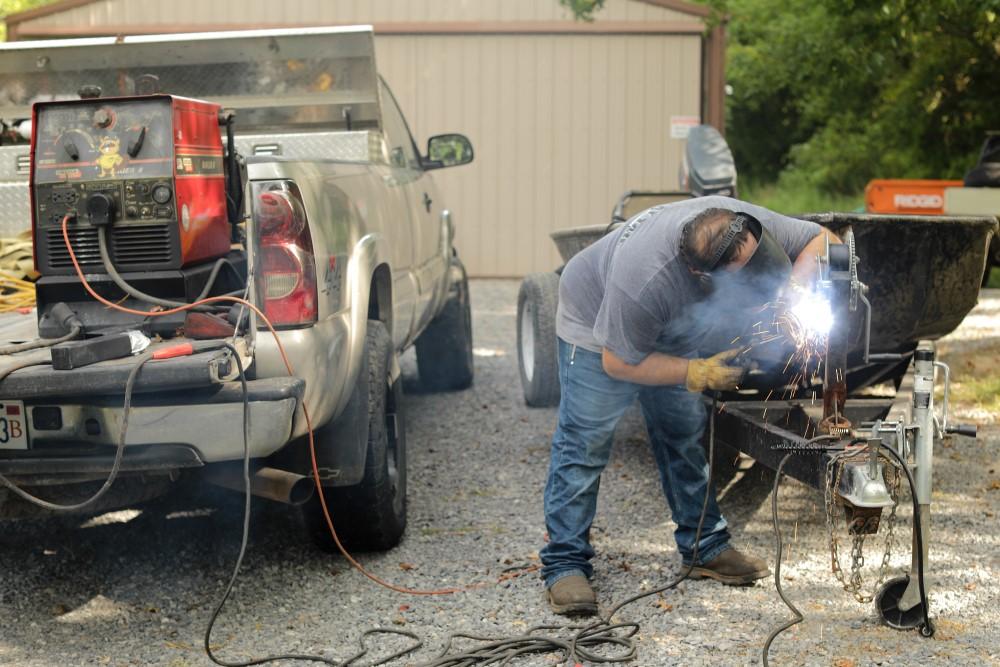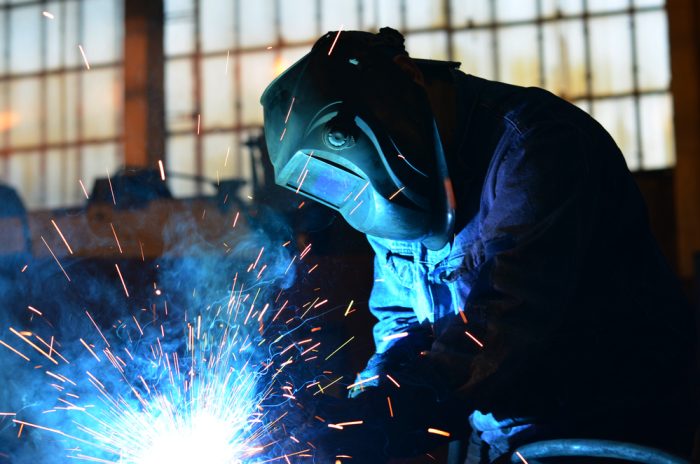All About Welding: Trick Insights Into Techniques and Best Practices for Success
Welding encompasses a variety of techniques, each fit for particular materials and applications. Understanding these approaches, such as GMAW, SMAW, and TIG, is necessary for achieving optimal results. Moreover, the ideal tools and safety techniques can not be overlooked. As prep work and fixing play essential roles in the welding process, mastering these components can greatly enhance the high quality of the last item. What are the key aspects that guarantee an effective weld?
Comprehending Different Welding Strategies
Welding techniques encompass a range of methods, each matched to particular applications and materials. Among the most usual techniques are Gas Steel Arc Welding (GMAW), Shielded Metal Arc Welding (SMAW), and Tungsten Inert Gas Welding (TIG) GMAW, additionally recognized as MIG welding, is popular for its speed and adaptability, making it perfect for slim products. SMAW, or stick welding, is favored for its simpleness and efficiency in exterior settings, particularly with thicker steels. TIG welding supplies accuracy and control, making it suitable for elaborate work and non-ferrous steels (Montana Mobile Welding and Repair Belgrade Welding). Each technique has its unique benefits and factors to consider, permitting welders to select the most effective technique based upon the project's needs, material type, and preferred outcomes. Recognizing these techniques is necessary for effective welding
Vital Welding Tools and Devices
While different welding techniques call for particular skills, the appropriate devices and tools are just as vital for accomplishing quality outcomes. Essential welding equipment includes welding devices, which differ depending upon the technique-- such as MIG, TIG, or stick welding. Safety gear, consisting of gloves, aprons, and safety helmets, guarantees safety and convenience during the process. Furthermore, fixtures and clamps help secure materials in area, guaranteeing accuracy in welds. Consumables like welding poles, cord, and protecting gas are likewise crucial elements that influence the top quality of the weld. Devices such as cutters and grinders help with surface area preparation and post-weld finishing, contributing to an expert outcome. Buying high-quality tools eventually enhances the effectiveness and efficiency of welding jobs.
Security Practices in Welding
Proper safety practices are vital in the welding market to shield workers from potential risks. Welders must use suitable personal protective equipment (PPE), including helmets with correct shading, handwear covers, and flame-resistant clothes. Appropriate air flow is crucial to reduce direct exposure to damaging fumes and gases created during the welding process. In addition, workers need to be learnt the correct handling of welding equipment to stop mishaps. Fire precaution, such as maintaining flammable materials away from the welding area and having fire extinguishers readily offered, are essential. Regular examinations of equipment and work spaces can aid identify potential dangers prior to they lead to accidents. By sticking to these safety and security techniques, welders can develop a more secure working environment and minimize risks connected with their profession.
Readying Products for Welding
Preparing products for welding is a vital step that considerably influences the top quality and honesty of the last product (Montana Mobile Welding and Repair). Correct preparation entails cleaning the surfaces to remove contaminants such as corrosion, oil, and dirt, which can endanger the weld. Strategies such as grinding, fining sand, or utilizing solvents are frequently utilized to achieve a tidy surface area. Furthermore, guaranteeing that the products mesh well is necessary; gaps can result in weak welds. It's likewise essential to take into account the alignment and positioning of the parts, as this will certainly impact the convenience of welding and the final result. Finally, choosing the proper filler material and making certain compatibility with the base metals is essential for attaining solid, sturdy welds
Tips for Getting High-Quality Welds
Attaining high-quality welds needs attention to information and adherence to best techniques throughout the welding procedure. Appropriate joint prep work is vital, ensuring surfaces are totally free and clean from contaminants. Selecting the appropriate filler product and welding strategy based on the base metals is crucial for perfect bonding. Keeping regular traveling rate and angle while welding can protect against flaws and promote harmony. Furthermore, managing heat input is essential; extreme warmth can cause warping and deteriorated joints. Frequently checking the welds during the process enables instant changes if necessary. Ultimately, using ideal post-weld therapies, such as cleansing and stress and anxiety relief, can improve the durability and honesty of the weld, ultimately guaranteeing a successful end result.
Repairing Usual Welding Issues
Welding usually presents challenges that can influence the high quality and honesty of the end product. Usual concerns such as porosity, inconsistent weld grains, and getting too hot can arise, each requiring particular fixing techniques. Understanding these troubles is crucial for welders to improve their abilities and attain excellent outcomes.
Porosity Issues Clarified
Porosity can usually be forgotten, it stays a vital issue in welding that can endanger the honesty of a finished product. Porosity describes the visibility of small gas pockets within the weld bead, which can deteriorate the joint and lead to premature failure. This problem typically emerges from impurities, moisture, or inappropriate protecting gas insurance coverage throughout the welding process. To minimize porosity, welders must verify that the base products are tidy and dry, use ideal shielding gases, and preserve regular welding criteria. On a regular basis inspecting the devices and atmosphere his comment is here can also assist identify potential concerns prior to they materialize in the weld. Resolving porosity successfully is essential for achieving solid, resilient welds that fulfill high quality criteria.

Irregular Weld Beans
Irregular weld grains can significantly influence the top quality and strength of a completed product. Various aspects add to this issue, including incorrect travel speed, wrong amperage settings, and inconsistent electrode angles. When the welder relocates as well rapidly, a bead might appear narrow and lack penetration, while moving as well slowly can cause too much buildup. Additionally, using the wrong amperage can result in either damaging or too much spatter, both of which concession weld stability. The welder's strategy, such as inconsistent torch movement, can also result in irregular grain appearance. To reduce these issues, welders should concentrate on keeping constant, regulated motions and guaranteeing proper equipment settings to accomplish uniformity in their welds. Consistency is vital to accomplishing solid and reputable welds.
Overheating and Bending Issues
Extreme warmth throughout the welding process can bring about considerable overheating and buckling problems, influencing the architectural integrity of the work surface. These problems frequently materialize as distortion, which can compromise alignment and fit-up, making more setting up challenging. Factors adding to overheating include the option of welding criteria, such as voltage and travel rate, in addition to the kind of material being bonded. To reduce these concerns, welders need to maintain constant travel rate and suitable heat input while keeping track of the work surface temperature level. Additionally, pre-heating or post-weld warmth therapy can aid ease tensions brought on by rapid air conditioning - Montana resistance seam welding Mobile Welding and Repair Belgrade Welding. Regular evaluation and adherence to best methods are vital in stopping getting too hot and making certain the long life and reliability of welded frameworks
Regularly Asked Inquiries
What Are the Profession Opportunities in the Welding Market?
The welding market offers varied profession chances, including settings as welders, instructors, inspectors, and designers. Experts can operate in manufacturing, construction, aerospace, and automotive fields, gaining from strong need and affordable wages in various roles.
How Can I Enhance My Welding Rate Without Giving Up High Quality?
To enhance welding speed without sacrificing high quality, one need to exercise effective strategies, preserve equipment, enhance settings, and enhance hand-eye sychronisation. Normal training and seeking feedback can additionally greatly add to accomplishing quicker, high-quality welds.
What Certifications Are Offered for Welders?
Countless certifications exist for welders, consisting of those from the American Welding Society (AWS), the National Center for Construction Education and Study (NCCER), and different industry-specific companies. These qualifications enhance employability and demonstrate ability effectiveness.
How Does Welding Affect the Qualities of Metals?
Welding influences the homes of steels by modifying their microstructure, which can cause modifications in strength, ductility, and hardness. Warmth input and air conditioning prices during the procedure substantially impact these product qualities.
Can I Weld Dissimilar Metals With Each Other?
